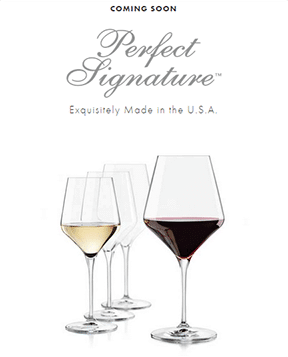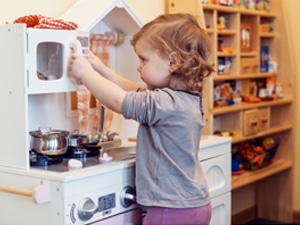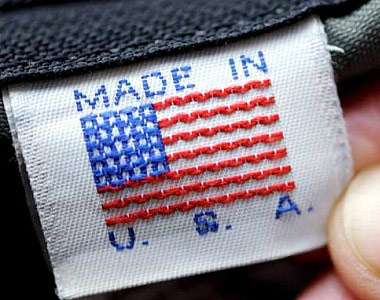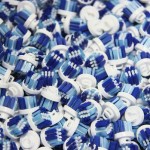New Toy Safety Standards Become Law
Aug. 14, 2008
From lunchboxes and backpacks to baby cribs and toy figurines, a lengthy effort to make children’s products safer has finally cleared the final hurdles. New toy safety standards become law.
Mandatory federal standards will soon dictate how many children’s products are made before they can be sold in stores. On Thursday, the president signed into law an expansive consumer product safety measure that includes, among many elements, tough new standards for lead and chemicals in products meant for kids younger than 12. It also calls for mandatory safety tests and sets forth more ways to keep kids safe in the event of a recall.
To parents who are sadly all too familiar with product safety, the law is a milestone.
“As far as I can tell, I believe it definitely is a huge improvement,” mother Lisa Davis told ABCNews.com. Davis’ 13-month-old daughter Ellie died during a nap in 2002 when the changing table portion of a Graco play yard fell on her neck.
“I’m not naive enough to believe that there are going to be no accidents in a children’s product, but I guarantee you, 90 percent of them are going to be improved with this bill, in my opinion,” Davis said.
For the last year, major toy and product recalls have dominated the headlines, whether concerns were sparked by worries about lead poisoning in Thomas the Tank Engine trains, Aquadots coated with a date rape drug or baby cribs not safe for sleeping. After several huge recalls before the holiday gift-giving season during the winter, fears about toy and product safety ran rampant.
Those fears prompted louder calls than ever for consumer product safety reform, as well as stepped-up inspections of imported toys and children’s products.
“What about the busy mom who’s got the 4-year-old grabbing at her pant leg, the phone’s ringing and the 1-year-old’s in the play yard?” Davis asked.
“I could not believe that there weren’t more rigorous standards for making baby’s products.”
“This bill will help to ensure that products Americans find on their store shelves are safe and that the regulating agencies have the resources they need to enforce law,” White House Deputy Press Secretary Tony Fratto said today. “This has become an increasingly difficult and complex job as more imports from more nations are now sold in the United States than ever before. Although we had some concerns with the bill, we’re pleased that Congress included some recommendations from the President’s Action Plan for Import Safety.”
Consumer groups that include Consumers Union, the Union of Concerned Scientists, the U.S. Public Interest Research Group and Public Citizen have said that more than 27,000 deaths occur in the United States each year from products under the purview of the Consumer Product Safety Commission.
Of the product involved in her family’s tragedy, Davis said, “The bottom line was that the design was horrible.”
“Because of this bizarre crescent-shaped hole, it fit right over, and it would fit right over any little kid’s neck,” she said.
According to a February 2008 joint release from consumer groups, there were 473 recalls during the 2007 fiscal year. Among them were 25 million toys recalled because of lead paint, magnets and other concerns. At that time, U.S. Public Interest Research Group consumer program director Ed Mierzwinski called the safety commission “a little agency with a big job.”
Although standards are now changing, improvements to products in stores may not be completely apparent in time for the 2008 holiday shopping season. The law requires some provisions to begin within months and others to begin within years.
It will take two years, for instance, to start a database that will enable people to search for injury, death or illness reports on products.
And although she said “this year’s Christmas toys are probably already shipped,” Nancy Cowles, executive director of Kids in Danger, a nonprofit advocacy group in Chicago, added, “I’m certainly hoping that at least some of the major manufacturers and retailers have already put into place some of the measures already in the bill.”
On Tuesday, the Toy Industry Association, a group that represents more than 500 manufacturers and toy importers, said the group is already working on a Toy Safety Certification Program to enable products to conform to the new law.
The new law will also give the Consumer Product Safety Commission new resources to ensure safe products and will require lead levels to eventually be reduced to 100 parts per million. It requires mandatory testing and safety certifications on children’s products for ages 12 and younger and calls on foreign manufacturers to adhere to U.S. standards for toy safety. It requires manufacturers to label products with tracking information so people can easily find out if the product they own has been recalled.
The law also bans selling kids’ toys and products that contain more than 0.1 percent of certain phthalates, which are chemicals used to make soft and flexible vinyl.
But the effort to restrict those chemicals has met some resistance from the American Chemistry Council. On July 28, the council said it supported bolstering the Consumer Product Safety Commission but said the element of the law that will restrict phthalates is ill-conceived.
“Our children’s health and safety is too important to rush through product restrictions without understanding their full consequences and ACC [the American Chemistry Council] believes that restricting phthalates from children’s products, when they have been deemed safe for use in those products by the CPSC [Consumer Product Safety Commission], will do nothing to protect children’s health,” Sharon Kneiss, vice president of the products division at the chemistry council, said in a statement.
“There is no scientific basis for Congress to restrict phthalates from toys and children’s products,” she added. “With over 50 years of research, phthalates are among the most thoroughly studied products in the world, and have been reviewed by multiple regulatory bodies in the U.S. and Europe.”
On Capitol Hill, the House and Senate came to an agreement on the measure to give the Consumer Product Safety Commission a makeover at the end of July and sent it to the president for his signature earlier this month.
“One of the roles of government is to get between kids and the sorts of hazards that are well beyond parents who aren’t engineers and chemists with laboratories at their disposal,” said Texas Republican Joe Barton, ranking member on the House Committee on Energy and Commerce panel, in a July 28 release.
Senate Commerce, Science, and Transportation Committee chairman Daniel K. Inouye, D-Hawaii, said, “The Consumer Product Safety Commission (CPSC) has been a neglected agency for too many years, but this legislation puts an end to that neglect. As a result, the CPSC will have the resources, both in personnel and in authority, to provide meaningful and effective oversight for the millions of consumer products that are used each day in the United States.”
ABC News’ Brian Hartman and Yunji de Nies contributed to this report.









Leave a Reply
Want to join the discussion?Feel free to contribute!